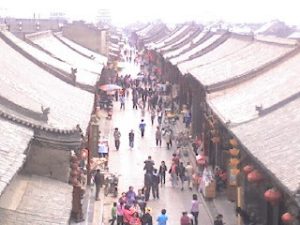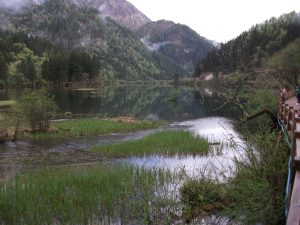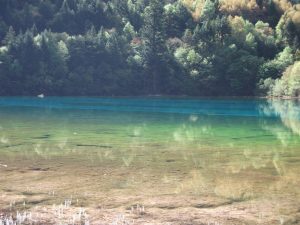🌍🎒シニアバックパッカーの旅 2011年5月8~11日 国際学会での発表 ⑽山西省(平遥)⑾四川省(九塞溝、黄龍)⑿広東省(広州市)
公開日:
:
最終更新日:2023/06/13
シニアバックパッカーの旅
広州で開催された国際観光学会で発表するため、中国に。せっかくの機会なので、溝尾先生も訪問した九塞溝に平遥をも訪れる予定を立ててもらった。中国も経済成長著しく、崔先生も調査費を確保されており、旅費等も負担してくれるということであった。3.11の東北大地震のことも報告。
5月 日 広州市
Tourism policy and tourism development in Japan
(Full Text)
Shuichi TERAMAE Ph.D.
Mayor of KAGA CITY
Ex professor of Takasaki city university of economics
1. The change of the purpose of Tourism Policy in Japan
(1) Purpose of tourism policy
① Former purpose
In the legal system, at first, the purpose of tourism policy in Japan was to earn foreign exchange.
Around 1930 Japanese government was trying to improve the balance of payment depending on the foreign debt. In 1930 Japanese government established the Bureau of Foreign Trade at Ministry of Commerce and the Bureau of International Tourism at Ministry of Railway. Simultaneously the government enacted Preserving National Treasures Act (1929) and National Parks Act (1931).
Back in 1936, the number of foreign tourist arrivals climbed to about 42,000, and they spent about 100 million yen. Revenue from tourism was an important one among non-trade income or services balance because the income from the international shipping at that time was about 200 million yen.
After World War II, in 1949, Japanese Government enacted International Tourist Hotel Development Act for the acquisition of American tourists. In 1952 after issuance of the San Francisco Peace Treaty recovering administrative rights from The Allies, Japanese Government enacted Travel Agency Act to gain the trust of American tourists.
1963, one year before Tokyo Olympics, the government enacted Tourism Basic Law which was not so influential as a result. In fact, by the 1971 revision of Travel Agency Act, the purpose of tourism policy changed substantially. At that year the number of Japanese overseas travelers exceeded the number of foreign visitors to Japan for the first time.
② Ten-million program
In 1987, in order to reduce U.S. dollars held by Japan, Japanese government launched unusual Ten-million Program. Its goal was to double the number of Japanese overseas travelers. Japan’s foreign reserves increased, becoming as important measures to decrease foreign currency. At that time, because I was responsible for the practical plan as the director of Minister of Transportation, I feel very nostalgic.
Thanks to the strong yen, overseas travel has become easier. The number of Japanese traveling abroad has increased. As a result, the program of increasing from 5 million to 10 million was carried out in three-year. In 2009 it is 17 million. On the other hand the number of foreign tourists to Japan was not so increased.
③ New purpose
Prime Minister Koizumi is the first prime minister in Japan who used the word tourism in the administrative policy speech at the national diet. The speech in 2004 is as follows.
— By doubling the foreign tourists visiting Japan in 2010 and achieving “nation-building of good living, good visiting”, Japan promotes actively “Tourism Nation Policy”. By promoting this policy, Japan sends abroad Japan’s attractiveness and each region utilizing natural beauty and good landscape. —
At this stage old Tourism Basic Law had been completely not corresponded to times. New Tourism Nation Promotion Basic Law was enacted in 2006. The purpose of tourism policy has changed to national and regional pride. Behind legislation there is the following widespread recognition. The number of foreign tourists visiting our country is not appropriate for Japan’s total position in the international community.
(2) Resort boom and Japan Tourism
In 1987 Comprehensive Recreation Area Improvement Act (so-called Resort Act) was enacted. Because the amount of foreign exchange reserves had increased, the need to expand domestic demand grew. All over Japan resort development was planned at that time. Resort development boom happened.
By the collapse of the bubble economy, most of the resort plan failed. Hotel company and bank failures occurred. On the other hand, it was pointed out the environmental problems from the beginning.
Many Japanese researchers including tourism policy researchers have criticized Resort Act. However Resort Act is the first comprehensive law for tourism policy. In terms of legislation, it is to be judged. In this Act, the word resort was used, and not used the word tourism. The reason is why tourism has not yet been recognized socially at that time. Two Words of resort and tourism are much the same and have many common parts each other. However after Koizumi the word tourism acquired citizenship in Japan. So many students have changed to study tourism. The times have changed.
(3) The etymology of tourism
The etymology of Japanese word “kankou 観光” which means tourism required for the famous phrase in “I Ching 易経”Chinese classic “to watch the light of the country 観国之光”. In 1930, by royal decree, at the Ministry of Railways, the International Tourism Bureau was established. Royal Decree regarding the establishment of the International Tourism Bureau is the first example using this word as legal one. But the meaning of “kankou観光” at that time, unlike the origin, changed “to show Japanese culture to the foreign tourists”. Because Deep groove is lying between the origin and the actual meaning, Japanese tourism policy has become hard to understand.
2. Phenomenon of relative between the unordinary and ordinary
Policy will be implemented through laws, taxes, subsidies, etc. Particularly taxation has been done by force, it is the most normative. Toll, admission tax and entertainment tax (lodging tax, restaurant tax) were introduced for war funding in 1937, which had tourism inhibition effect. Those taxes were abolished after introduction of sales tax of 1989. In the tax system, finally tourism inhibition policy was obsolete. Phenomenon of relative between the unordinary (non-routine) and ordinary (routine) occurred in the tax system.
Previously, in general, tourist facilities were more impressive than houses for daily life. Today, the home facility is not inferior to tourist resorts in Japan. The phenomenon occurred in relation between resort facilities and living facilities. Common transportation like commuting was strongly regulated in Japan. On the contrary, tourism transportation was weekly regulated or non-regulated. But after deregulation of transportation in Japan, both become similar.
On consciousness, national parks and home gardens are felt like. The same applies to the relationship between national treasure and regional pride (treasure of community). All over Japan, the phenomenon of relative occurred.
Thinking of Tourism development in Japan, this phenomenon can not be ignored. Regional tourism policy objectives are to demonstrate community pride, which is declared by new Tourism Nation Promotion Basic Law (2006).
3. Inharmony between “national policy” and “regional tourism”
Policy concept involves a norm of fairness. And tourism, especially regional tourism is to develop regional character. Thus we must recognize that there is inharmony between “national policy” and “regional tourism”.
Territory definition refers to land that is put together because of the adjacent terrain and the same nature. A region is the concept of place which is considered the difference between the others.
By the deployment of various initiatives such as balanced national development and the formation of a transportation area one day trip to Tokyo, the differences among regions in Japan, with time, are becoming less and information and communication technology have accelerated it.
The central government can not support regional tourism unlike other exercise of individuality. Tourism administration should have been belonged to the municipal government.
We tourism researchers must distinguish between tourism and tourism policy. The reason to distinguish between policy and non-policy is that standards that apply to the policy are different from those apply to private activity. Occasionally I can recognize in papers the cases of confusing definitions between them.
4. KAGA City tourism policy
(1) KAGA Hot Spring spa town
KAGA hot spring spa town is the eighth largest in Japan. The largest is Hakone Hot Spring spa town near Tokyo. About 200 million tourists per year visit KAGA Hot spring spa town. 400 million people in its heyday visited there.
KAGA Hot Spring spa town consists of Yamanaka hot spring, Yamashiro hot spring and Katayamazu hot spring. History of the former two will be 1300 years, in fact, when written records were to be left in Japan.
Significant reduction in the bathing guests is caused by changes in the form of Japanese tour. Unfortunately in KAGA, went bankrupt a long-established Japanese style traditional hotel founded 800 years.
2) Tourism Resources Development other than hot spring
For Regional Tourism Policy in Japan, accommodation is most important in general. Fortunately, KAGA Hot Spring spa town has enough accommodation. It is necessary for KAGA to develop tourism resources other than hot spring as follows.
KAGA city is derived from the castle town KAGA-Daishoji, ruled by one of Feudal Lords in the Tokugawa Shogunate. Small towns like Daishoji are classified as little Kyoto in Japan.
After the collapse of the Ming Dynasty, Porcelain art technology to make highly was inherited from China to Japan. At that time, porcelain art was very expensive. Only feudal lords could buy porcelain art.
Feudal lord of KAGA-Daishoji developed his own style porcelain art technology, Old-Kutani1), and Yamanaka lacquerware2). These are now succeeded by Living national treasure of KAGA area.
In KAGA city there are two Preservation Districts for Groups of Historic Buildings, ship owners’ houses at Hashitate district and Mountain village at East Valley.
Traditional haute cuisine dishes are wild duck dishes and winter crab dishes. These dishes are high prices. Special pond called KATANO Duck Pond3) is registered by the Ramsar Convention4). New haute cuisine is KAGA Grape called the Ruby Roman, 1000 dollars a bunch.
Note1. Its feature is the extensive use of brilliant colors blue and green and the bold and innovative design. That pottery started around 1655, however suddenly abandoned around the early 18th century
Note2. It began as a souvenir for spa guests, history dates back to 16th century. Production volume of Yamanaka is highest in the nation by the introduction of synthetic resin products. Currently, the traditional natural wood and lacquered products are emphasized.
Note3. historical man-made pond as bird sanctuary, where the use of traditional nets for capture wild birds is permitted exceptionally by mayor of KAGA city.
Note4. an abbreviation of International Convention for the Conservation of Wetlands, known as Ramsar Iranian city where this treaty was created.
(3) Expectations of new Shinkansen
Tourism Resources in KAGA are relatively precious, unordinary. To take advantage of the features of KAGA, our tourism strategy is to focus on high-income earner. At present percentage of visitors from the Tokyo metropolitan area is less than 10 percent. But it is hidden asset.
New High Speed Railway (Shinkansen) between Tokyo and KAGA area is now under construction and will open in 2014. After opening we are able to expect increase in tourists from Tokyo where many high-income earners live.
(4) Foreign tourists
Measures to attract foreign tourists are view topic, having been discussed in a number of local councils in Japan. Many Japanese cities are launching policies to attract foreign tourists. It seems to me that everyone has the same. Tourism is the realization of individuality in the region.
First as mayor of KAGA City, I will target high-income earners in Tokyo, especially senior-residents in central Tokyo. Then the young will be following.
After the success of this policy I will target rich foreign tourists. We have the international airport in KAGA area, called Komatsu Airport, linking to Shanghai and Soul. I am sure that the demographic groups of the one-child policy by Chinese government, therefore, become wealthy some day. As a mayor of local city which is not so big, from now I want to study trends of the next generation of foreign tourists.
広州市での講演内容
広州市での学会発表資料
5月8日 平遥
5月10日 九塞溝
関連記事
-

-
🌍🎒シニアバックパッカーの旅 2015年3月 リトアニア(国連加盟国66か国目)
ビルニス ヘルシンキから空路ジェット機で90分。ヘルシンキとの往復3万円程度である。航空会社の方
-

-
🌍🎒2024シニアバックパッカー地球一周の旅 2024.2.8~3.8 旅行計画の作成
シニア―・バックパッカーの旅 (観光・人流学雑記) ◎「地球」一周旅行と「世界」一周旅行 ク
-

-
🌍🎒シニアバックパッカーへの道 2003年 中国⑸海南省 博鰲
海南航空社長の専用ジェット機で 二階俊博氏と香港から海南島へむかう。ニュージーランドの女性国会議員も
-

-
🌍🎒シニアバックパッカーの旅 2023年3月4日 国連加盟国163か国目 スーダン
2023年3月4日 スーダン行をいぶかしがるチェックインカウンターの
-
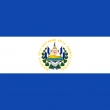
-
🌍🎒シニアバックパッカーの旅 グアテマラ(国連加盟国84か国目)、エルサルバドル(国連加盟国83か国目)とマヤ文明 2016年11月11日~13日
◎ グアテマラ到着 サンサルバドルの空港はキューバと異なり一流で混雑している。
-
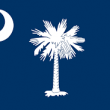
-
🌍🎒2024シニアバックパッカー世界一周の旅全米50州 CHS SC サウスカロライナ州(15番目訪問州)ドイツ語
https://photos.google.com/album/AF1Q
-

-
🌍🎒シニアバックパッカーへの道 2013年12月17日、18日 遼寧省旅順、大連
◎崔英華中国東北財形大学准教授の案内で大連を視察 JALの特典航空券を活用して大連、旅順を旅行。中
-
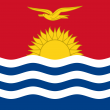
-
🌍🎒シニアバックパッカーの旅 2019年9月26日 キリバス 国連加盟国134か国目 タラワ(TWR)
https://photos.google.com/photo/AF1QipO
-

-
🌍🎒シニアバックパッカーの旅 モンゴル国フブスグル地区紀行~トナカイとシャマンとドロ━ン(5)
2015年8月23日 アムステルダムからの夫婦、ゲルから出かけることもな椅子に腰かけて二人で景色を
-
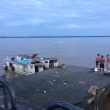
-
🌍🎒シニアバックパッカーの旅 2020年1月30日早朝 ブラジル ベレン
https://photos.google.com/photo/AF1QipNLldgVNWY8

